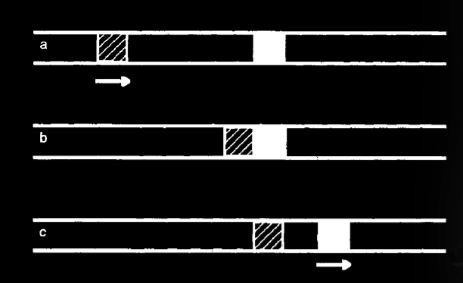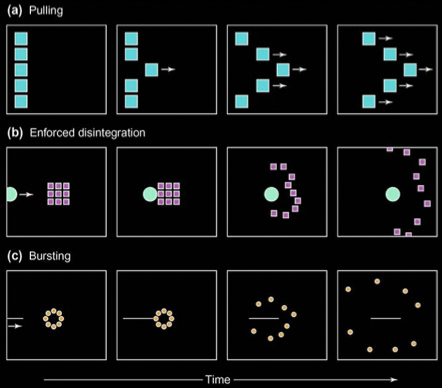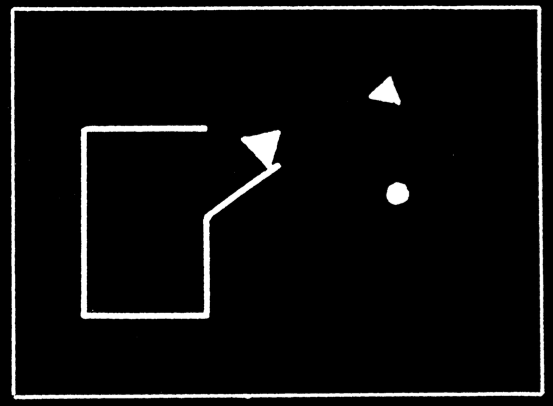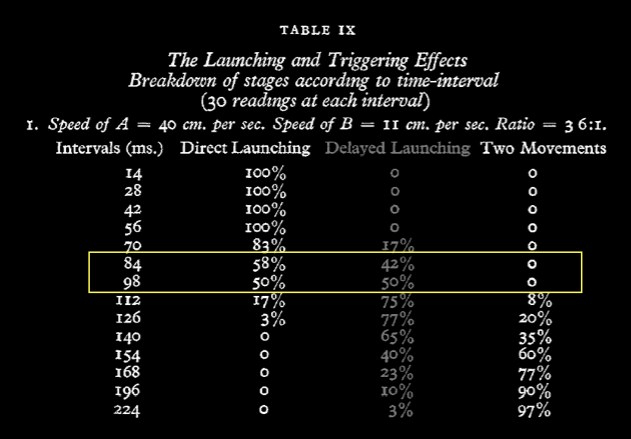Click here and press the right key for the next slide (or swipe left)
also ...
Press the left key to go backwards (or swipe right)
Press n to toggle whether notes are shown (or add '?notes' to the url before the #)
Press m or double tap to slide thumbnails (menu)
Press ? at any time to show the keyboard shortcuts
How to Get Beyond Intuition?
Can humans perceive causal interactions?

Thines et al (1991)

Scholl & Tremoulet 2001, figure 2

Heider & Simmel 1946, figure 1
Can humans perceive causal interactions?
How to get beyond intuition?
Michotte: the experience of launching depends on interactions among various factors including
- the relative speeds of the two objects
- the delay between the first and second objects’ movements
- the spatial gap between the two objects
- the trajectories of the two objects.

Michotte 1946 [1963], p. 115 table IX (part)

Michotte 1946 [1963], p. 115 table IX (part)
Consider an encounter with three two-object movements where the delays between movements are 50, 100 and 150ms.
1. The phenomenal difference between the first two encounters is larger than the phenomenal difference between the second two.
2. This difference in differences is a fact in need of explanation.
3. The fact cannot be explained by perceptual experience of objects or their motion.
4. The best explanation for (1) is that we perceptually experience causal interactions.
An alternative argument ...
‘… why it is that in our experiments certain particular conditions were found necessary in order to give rise to a causal impression. They correspond to the different characteristics of reproduction. …
anyone not very familiar with the procedure involved in framing the physical concepts of inertia, energy, conservation of energy, etc., might think that these concepts are simply derived from the data of immediate experience’
Michotte, 1946
(1) A distinctive experience occurs under certain conditions.
(2) The best explanation for (1) is that the experience in question is the experience of a collision.
How to get beyond intuition?
The launching effect: detecting a 50ms difference in the delay between two movements.
- How is launching detected? For example, does it involve perceptual processes?
- Why is a delay of up to around 70ms consistent with the launching effect occuring?